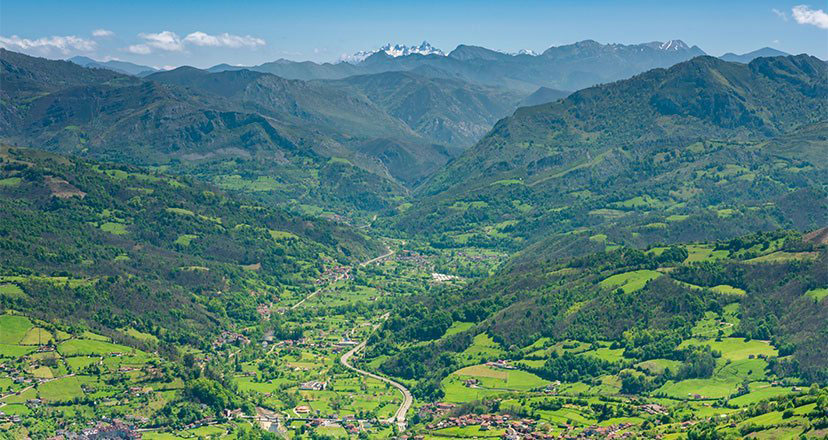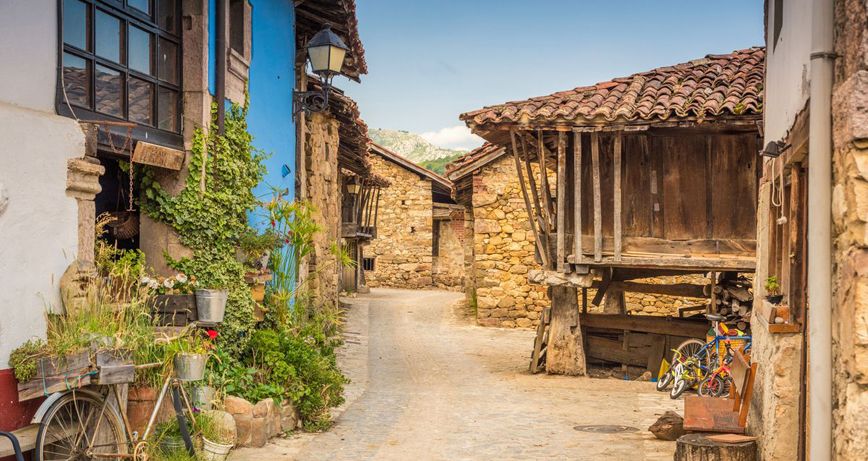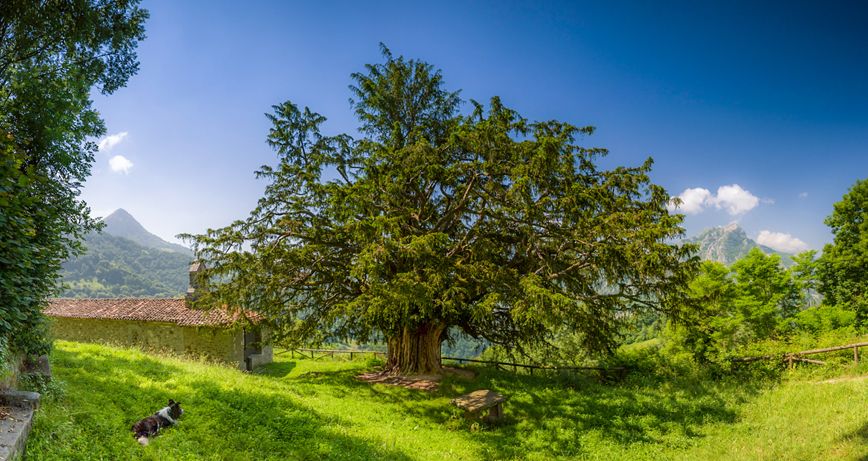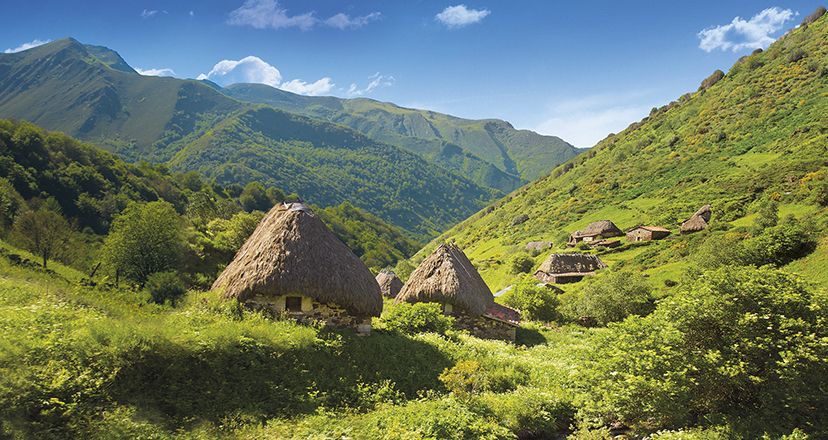Back Top 10 things to see and do in the Redes Natural Park
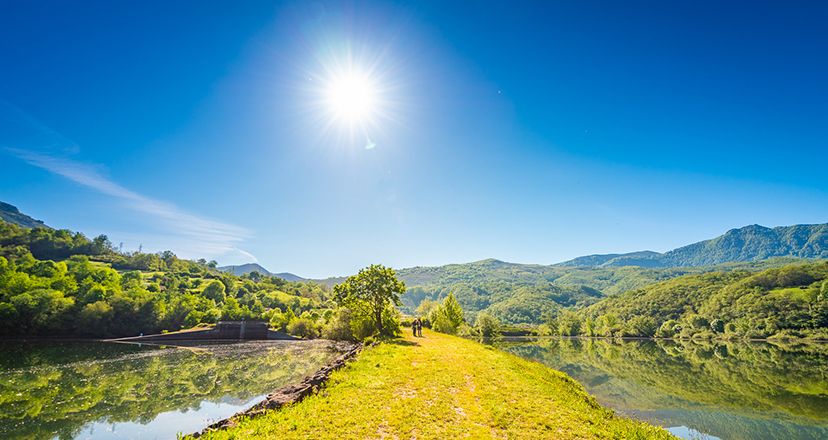
What to see and do in the Redes Natural Park: 10 unique experiences
The Redes Natural Park, which covers the councils of Sobrescobio and Caso, is one of the most unique natural, cultural, ethnographic, historical and human reserves in the whole of Asturias.
It is the pure south of Asturias, and its view towards the east makes it one of the great viewpoints of the Picos de Europa. The Redes Nature Reserve - which takes its name from a beech forest in Caso - is one of the most unique natural, cultural, ethnographic, historical and human reserves in the Principality of Asturias.
In every corner, a prodigy; in every hórreo, a museum; in every corner, the art of living that gushes out. A world of water, in the form of fountains, streams, rivers and reservoirs. A world of woodcarvers and wood craftsmen that transports us to a past of unique rural inventions, generated from the enormous tenacity of survival. And if we are talking about green, paths and forests, mountains and valleys, and always the peaks, descending to the heart of the earth, as if it were a mother. And meanwhile, the constant concert of the cows with their cowbells on the hillsides, in the villages, on the roads, in the caleyas or in the sheepfolds.
Caso and Sobrescobio, Sobrescobio and Caso are the two parts of an indivisible whole, where the river Nalón is the artery that gives life, and without whose waters flowing crystalline and humble in the Tarna pass, nothing in these lands of eternal passage towards the Meseta and vice versa, would be the same...
The Redes Natural Park was born in 1996, and a few years later, in 2001, it was declared a Biosphere Reserve by UNESCO, so this year it comes of age with this international distinction.
Redes is so inspiring that many travellers, mountaineers, explorers, writers, etc. have fallen under the powerful seduction of an untamed nature that is at the same time humanised and humanisable.
Precisely to bring out your inner explorer, on this trip we suggest that you...
The Top 10 Things to See and Do in Redes Natural Park
Let's get started!
THE NALONA, MUCH MORE THAN A FOUNTAIN
Ascending or descending the Tarna pass is one of the most authentic and pleasant scenic spectacles you can imagine. Not only will you have the opportunity to contemplate an incredible panoramic view of the Alto Nalón, but when you are about to reach the top of the pass, right on the side of the road, a signpost will indicate Fuente La Nalona.

Make a stop along the way, it's worth it. You will be in front of a spring that is not just one of those you will come across in your travelling and hiking life. It is no more and no less than the place where the longest and most abundant river in Asturias is born: the Nalón, which also has historical connotations as intense as the lives of the Asturian people.
The small spring, with the constant murmur of its pure, cold, crystal-clear water, will seem like a miracle to you, especially when a few kilometres further downstream you see it become a great river, one that will not leave you during your stay in the Redes Nature Reserve.
The surroundings of La Nalona are enveloping. It is the Tarna pass, a milestone on the Camín Real that crosses into Castile from Villaviciosa. It is the starting point for numerous hiking routes. A refuge for livestock and stockbreeders. And also, above this unique spot you can contemplate the craggy Remelende peak, the first landmark of the Sierra del Mongallu, which delimits the Redes Natural Park, and which gives rise to one of the most beautiful and dramatic routes in this natural area.

No wonder the Tarna pass is so popular with cyclists, motorcyclists, hikers... And of course it is also ideal for driving, and making short stops at some of the viewpoints along the winding road.
THREE NATURAL LANDMARKS: TABAYÓN DEL MONGALLU, LAKE UBALES AND BRAÑAGALLONES
Among the many beauties that Redes treasures, there are three that are extraordinary and unexpected: Tabayón del Mongallu, the Ubales lake and the Brañagallones fertile plain.
There are several options for reaching the famous Tabayón del Mongallu, a waterfall over 60 metres high, with a low flow and a great attraction. It can be reached via the Las Señales pass, and also from the village of Tarna, following an accessible and pleasant circular route, suitable for all ages.
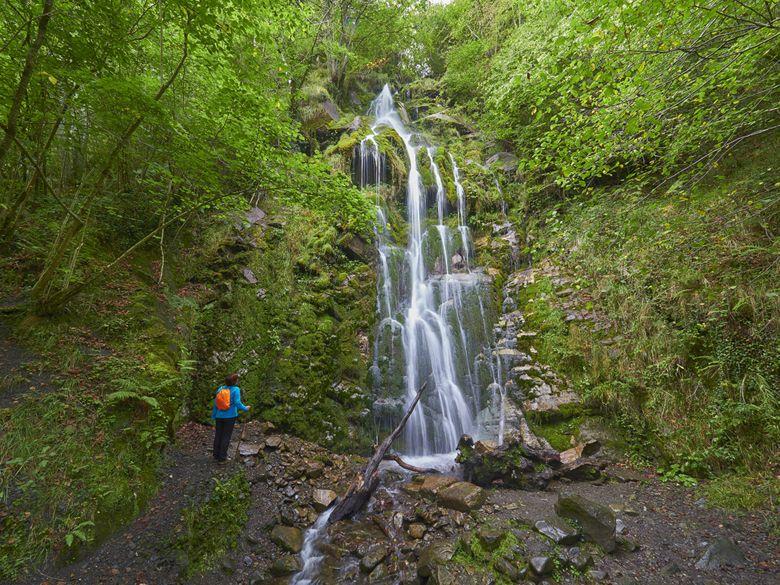
A few metres after heading towards the Tabayón del Mongallu from Tarna, you can turn off to your left towards the Llanu'l Toru, and there you can enjoy contemplating a group of very old oak trees, some of them of imposing size. After this impressive view, you can take the path back to the Tabayón. The path offers many moments of shade, in the middle of beech woods, where some trees take on surprising shapes, as if you were on the very stage of a mythological fairy tale. Along the way, you will come across wooden bridges, waterfalls, fountains and peaceful spots where you can rest from the fatigue of the path.
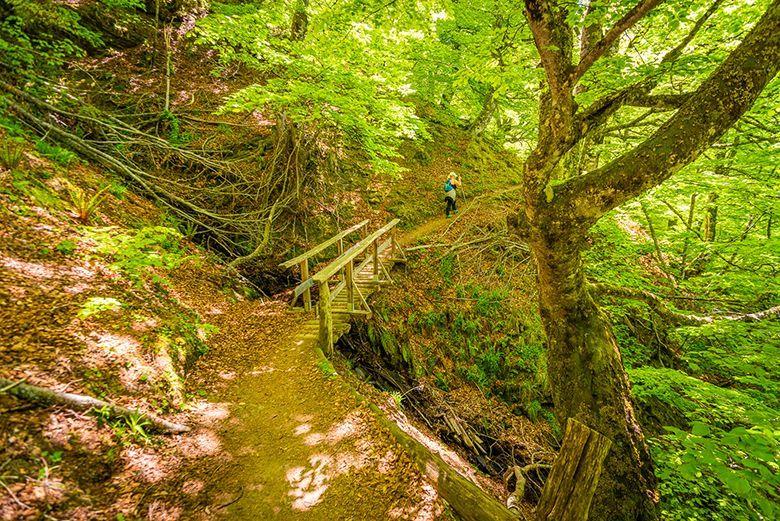
Water is always present on this marvellous route, and as you shorten the distance to the waterfall, the liquid murmur intensifies. Suddenly the forest fades away and before your eyes appears an immense sheepfold, where cattle graze. Finally, in the background, you can see the Tabayón del Mongallu.
Little by little, you approach the final ascent, and there is the great waterfall, spraying water, and bathing an immense landscape of forest and rock. You can return along the same path, or take another path in the majada that will take you into the valley of the river Mongallu, under the slopes of Cuetu Negru, and from there you will return to the quiet village of Tarna.
Lake Ubales is, without doubt, another of the natural wonders of Redes. The route to reach it, going up from La Felguerina, passing through La Infiesta and ascending the Canalina, offers unforgettable landscapes. The beauty of the ascent is simply indescribable.

Once in the Ubales area, the lake is impressive not only for its imposing size, but also because the views it provides of all the mountains of Piloña, Caso, Laviana, Ponga, Amieva or the Picos de Europa are absolutely incredible, as well as of the Brañagallones plain, which appears as a green clearing in the midst of the intense forest that surrounds it.
The Ubales lake route is one of the must-sees of the Redes Natural Park!
Likewise, if there is a plain famous throughout Asturias for being beautiful, peaceful and natural, it is Brañagallones, which takes its name from the roosters - roosters or capercaillies - that once had some roosts there (places where the males used to exhibit themselves during their breeding season).
Brañagallones will be the meadow of your dreams, and a privileged place to enjoy the local fauna and flora, surrounded by large beech forests. If you look back in time and close your eyes, you can see the glacier that occupied it and transformed it into what it is today, and you can still hear the voices of the families that lived off the cattle that grazed there.
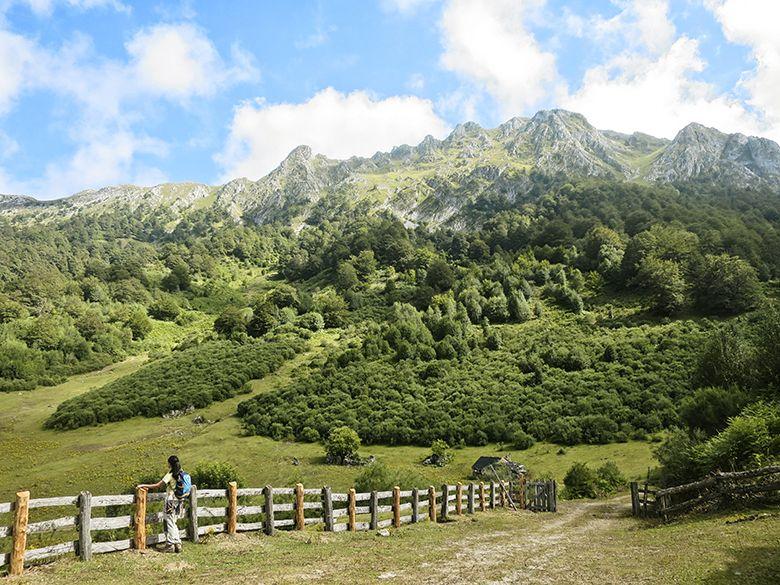
Brañagallones is also the finishing point of a route that starts in Bezanes, on the banks of the Nalón, and after a winding, ascending path takes you to the fertile plain in front of your eyes. A route with spectacular views, where you can stay in one of the best refuges in Spain, and from there go mountaineering in the surrounding area. Or you can simply go up and down during the day, spending an unforgettable day.
SOBRESCOBIO OR THE OMNIPRESENCE OF WATER
Even the name Sobrescobio is striking, derived from the sonorous Latin term "super-escopolum", a direct reference to the rugged orography of this territory of gorges and steep slopes, engendered and moulded to the taste of the geophysical forms of the river Nalón.
Just as striking are its villages, which seem designed to be the setting for mythological tales, where imaginary beings merge with the real thing.
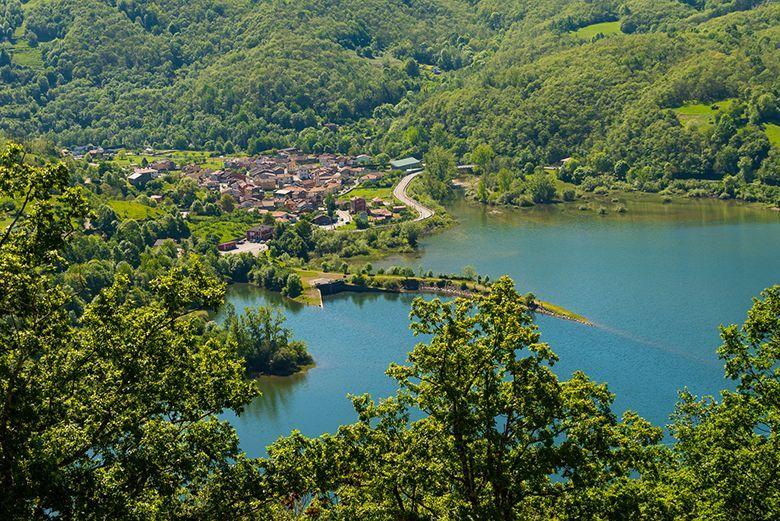
The capital of Sobrescobio itself, Rusecu/Rioseco, is deeply inspiring, especially for being on the banks of a marsh where different species of aquatic birds nest, and where, according to the different lights of the day, its waters show magical reflections, as if painted by a meticulous artist.
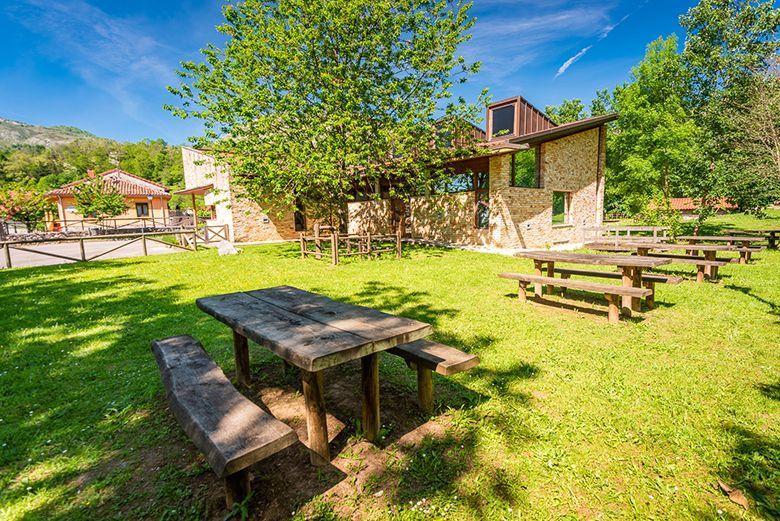
So it is no coincidence, given the omnipresence of the liquid riverbed of the Nalón, that Rusecu/Rioseco is the home of the Casa del Agua, a different space that combines tradition and the avant-garde, both in its forms and in its constructive and exhibition elements. A space to learn about and explore the uses of water and its connection with and influence on nature.
THE VILLAGES OF SOBRESCOBIO, PURE RURAL LYRICISM
A few kilometres from Rusecu/Rioseco, a handful of hamlets spread out in valleys or sloping down hillsides, lending an air of authenticity and even a tone of rural lyricism to this iconic council of the Redes Natural Park.
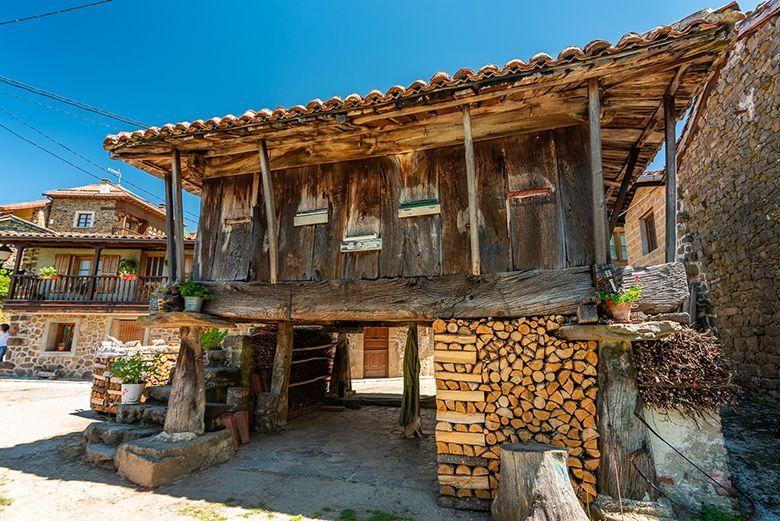
Villages at the bottom of the valley, such as Soto or Villamoréi, or perched high up, such as Llaiñes/Ladines or Campiellos. Villages where the rural scenes multiply, the livestock in the caleyas, the hórreos, and the very old houses. Villages where mills or washing places are still standing, or where there are immense texos near their churches.
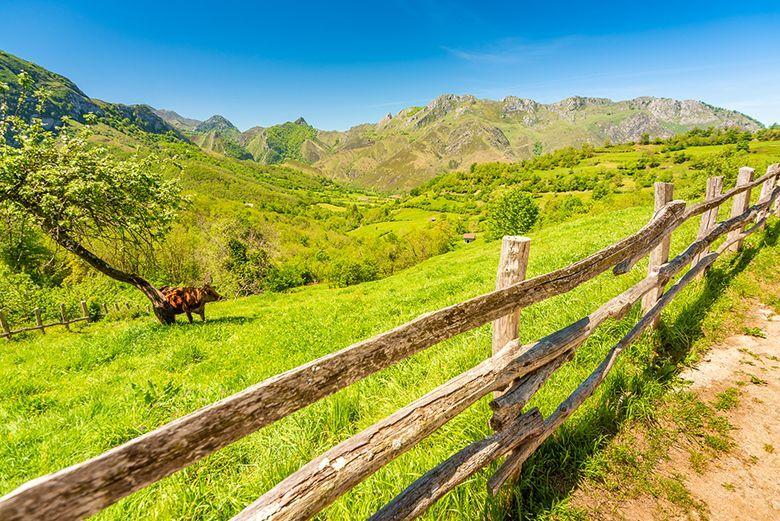
Villages such as Llaiñes/Ladines, where the views of the Redes mountains are spectacular.

Or Campiellos, where the panoramic view of Rusecu/Rioseco and its reservoir will take your breath away, and where there are paths adapted to enjoy the visual contemplation of the landscape, while at the same time there are special conditions for observing the sky on clear nights...
And as if that were not enough, to add a little mystery and legend, the village of Villamoréi has a tower in its surroundings (which you can reach by a hiking route), which is still standing, despite the passing of the centuries and the many vicissitudes. Suddenly you will discover it as if mimicking the watery landscape, turning its face towards the reservoir and telling us that it has been the watchtower of the gorge of the river Nalón for an eternity, controlling the passage of Tarna on its way to the Valley of El Condao and La Pola Llaviana/Pola de Laviana.
SOTO, THE GATEWAY TO THE ROUTE OF DAWN
Soto is an ideal place to experience the atmosphere of mountaineering. Start and end of the popular route of the Alba or the Llaímo gorges, it is a village that is always lively with thousands of hikers who, at any time of the year, come to enjoy this beautiful and pleasant route.
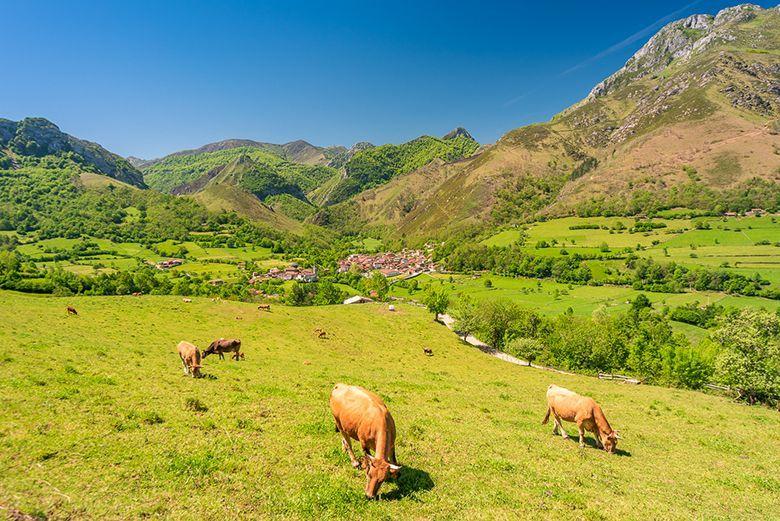
The village retains all its genuine flavour, with traditional houses and cobbled streets. Chapels, washing places, squares, granaries, and in the middle of the village, the river, harmoniously linking one bank with the other.
River bathing, fishing or gastronomy are options that complete the hiking perspective of Soto.
The view of this village, from the road that goes up to Llaiñes/Ladines, with the cattle in the foreground, grazing peacefully and in the background, in the valley, the always friendly Soto, gives you an idyllic picture that you will not want to forget.
In Abantru, time seems to have stood still. Its imposing stone houses, with impeccable stonework, tell of a time of craftsmen dedicated to their work. Its granaries, its steep streets, its bell to call 'conceyu' that wants to embrace the sky, the gatherings of the neighbours, and in the background, meandering in green, almost blending in with the landscape, the river Nalón once again.

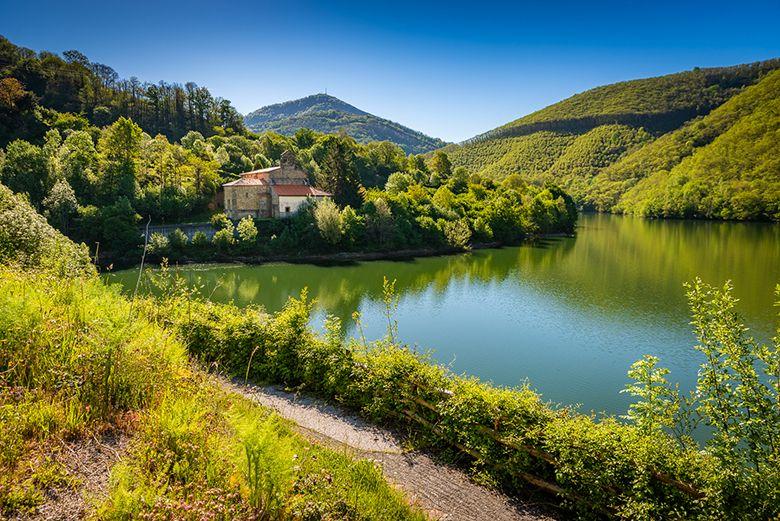
La Tercia de Bueres is made up of this village, together with the villages of Gobezanes and Nieves. These are three other villages with character and a strong personality, where the traditional architecture, the artisan atmosphere and the autochthonous livestock also stand out. Furthermore, in Nieves, the chapel of Los Dolores is a magnificent example of rural baroque and is striking for its square floor plan, its semicircular arch at the entrance and its mural paintings.
But the interesting and seductive villages of Caso are not limited to the Tercias. Orllé, Coballes, Belerda, La Felguerina, Soto de Caso or the capital of the council itself, El Campu, among others, are places worth visiting.
DEBOYU CAVE, A MAGICAL REFUGE IN THE NALÓN RIVER
Very close to El Campu, you will find the Cueva Deboyu, almost at the foot of the road and with a pleasant recreational area to enjoy the proximity of the river Nalón, which in this part of its course plunges into a grotto of spectacular shapes and proportions.

The sweet and serene flow of the river in this place gives you infinite peace. It is like a kind of totemic place, where nature becomes affable to the human being.
The Deboyu Cave is a magical refuge in the course of the river Nalón!
CALIAO, THE ENTRANCE TO THE ROUTE OF THE ARRUDOS
Like other villages in the Redes Natural Park, Caliao is the gateway to a classic hiking route in Asturias: the Arrudos gorge, perfectly signposted and famous for its many steps. In fact, this route is very attractive, it is a fascinating path that crosses beautiful beech forests, pastoral sheepfolds and where water, as it could not be otherwise, is very present, given that this gorge is one of the great river canyons of Asturias.
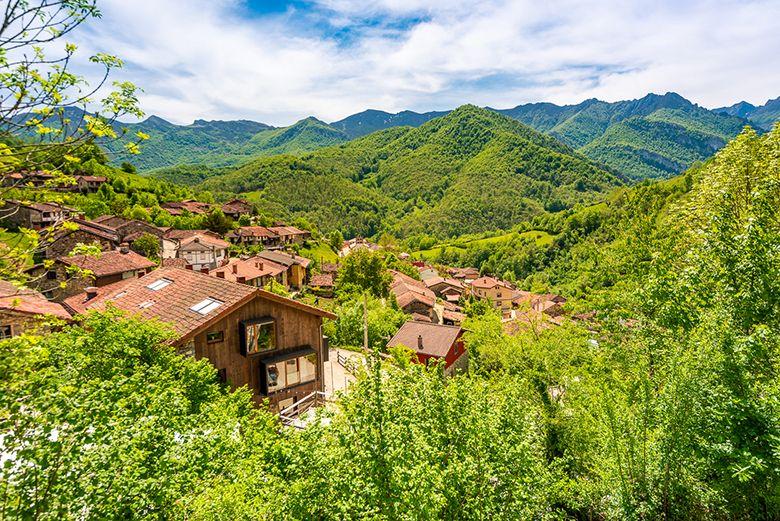
So Caliao is another of those villages where hikers from all over the world 'get lost' to find themselves, in the middle of the immense and leafy forest of Redes.
It is also a perfect place to go for a walk, to have lunch or dinner, or to spend a few days of leisure.
Caliao is the essence of Redes!
VENEROS, AN ODE TO WOOD CRAFTSMANSHIP
If there is one thing that stands out in Veneros, it is its devotion to wood craftsmanship, and good proof of this is the charming and well-documented Wood Museum, where you will discover in a peaceful visit all the secrets of wood craftsmanship and the art of making "madreñas", bearing in mind that the council of Caso is one of the great world references of "madreñería".
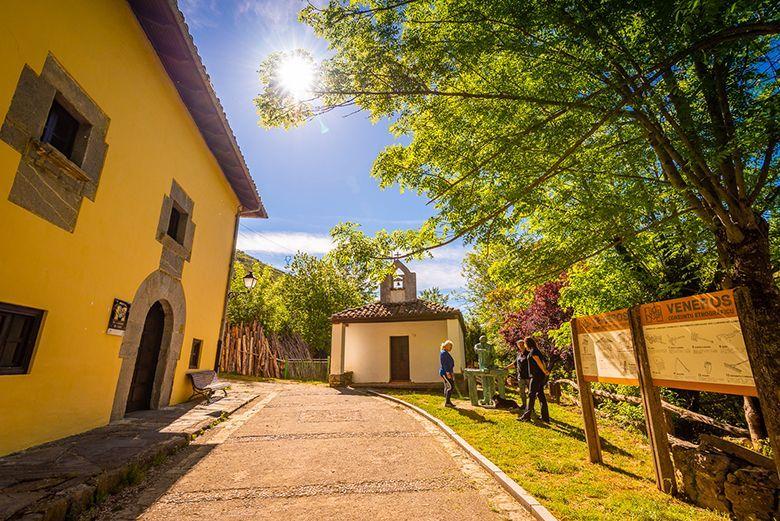
The contents of the museum are a journey through the history of wood and the inventions made with it in this area, which is still today one of the first ethnographic spots in Spain. On the outside, a beautiful sculpture in homage to one of the last Veneros' mother makers gives a special and emotional air to this corner, which you will find very pleasant to look at.
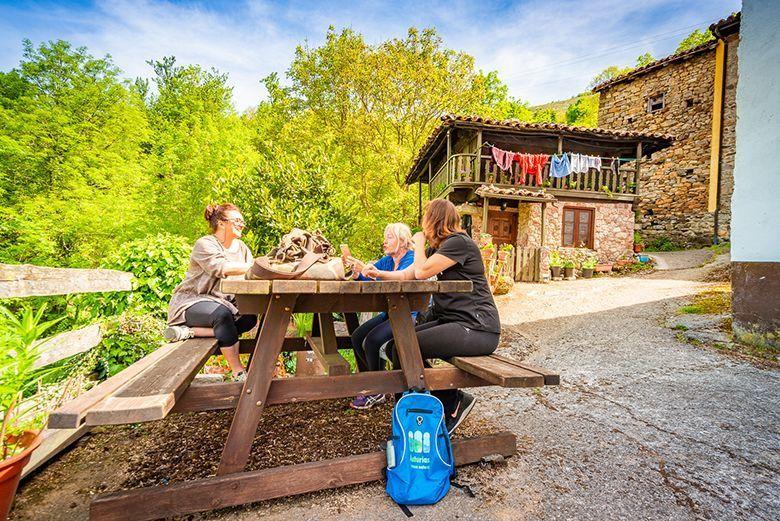
When you take a walk through Veneros, you will savour all the charm of tradition, with its steep streets, its nooks and crannies where you will suddenly come across a hórreo, a henhouse or a table, ideal for a break and a picnic, looking at the surrounding mountains.
LAND OF CHEESE AND LAMB ON THE SPIT
In a place like the Redes Natural Park, where livestock is omnipresent in everyday life, in culture and in traditional memory, gastronomy is another of those virtues to be highlighted.
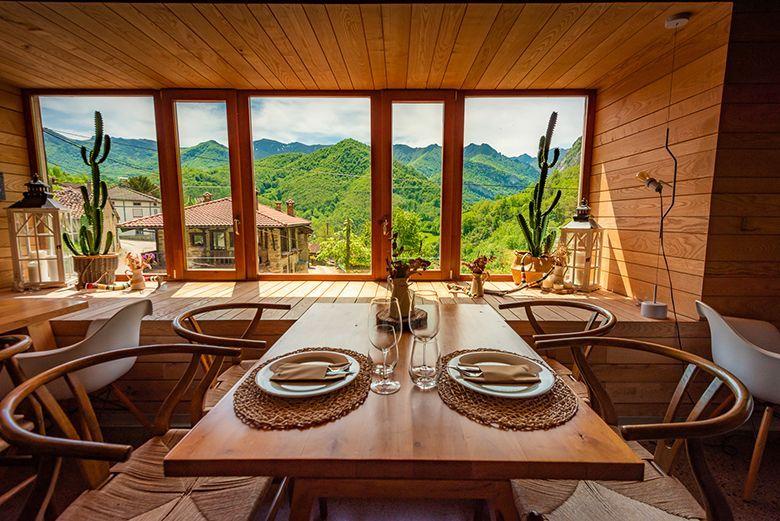
So when you are there you will realise that for the natives of the area the culinary issue is paramount, as is sharing moments of gastronomic enjoyment with family and friends, and also with travellers who are passing through, because hospitality and warmth in the treatment is one of the indisputable charms of this place of wonders.

And precisely in Redes, you will have the opportunity to discover one of the artisan cheeses of Asturias, the casín. One of the oldest cheeses in Spain, it is a complex and unusual cheese to make, as the curd is kneaded in a curd-making machine. With a strong and somewhat spicy flavour, casín is as rustic as it is ancestral, and will certainly not leave you indifferent.
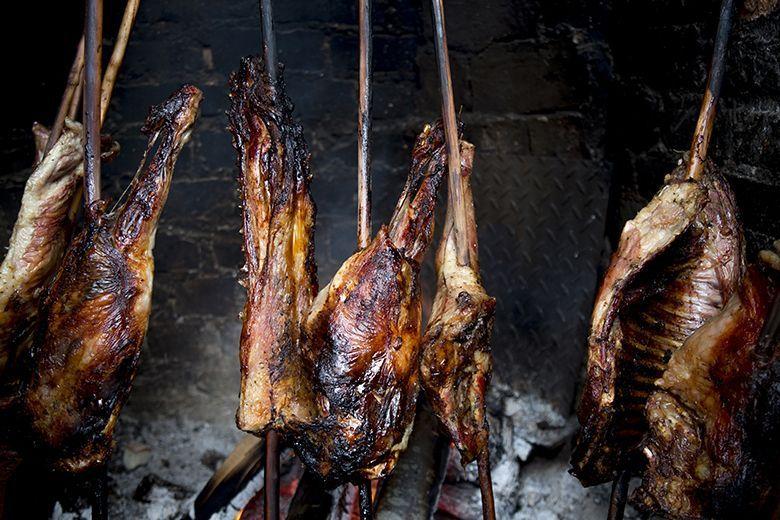
In addition, another of the essences of the Alto Nalón is lamb 'a la estaca', whose tradition was imported by a returned emigrant from Argentina a little over a hundred years ago, who gradually popularised it throughout Asturias. The local connoisseurs say that the secret is an excellent raw material - the lamb meat from the Alto Nalón -, oak wood or 'faya' from the local forests and a lot of patience?
So don't miss these delicacies!
CASE AND ITS HISTORIC TERTIARIES
To speak of the Redes Natural Park is to speak of tradition, antiquity, ancestry and traditions preserved for centuries and centuries, which will arrive intact to your traveller's lap, like a newborn baby to its parents.
One of these signs of identity that sink their roots in the memory of the time lived are the Tercias, an organisation of a rural environment made up of several parish hamlets, which were responsible for the payment of their tithes or tributes to the Church.
In Caso there were two tercias that still conserve the habits and memories of other times. And between the two tercias there are six villages, whose uniqueness, beauty and typicality will give you a reliable idea of what was the lifestyle and culture of centuries in this part of Redes.
One of these Tercias was that of Tañes, made up of three villages: Tañes, Prieres and Abantru. The three make up an absolutely idyllic route.
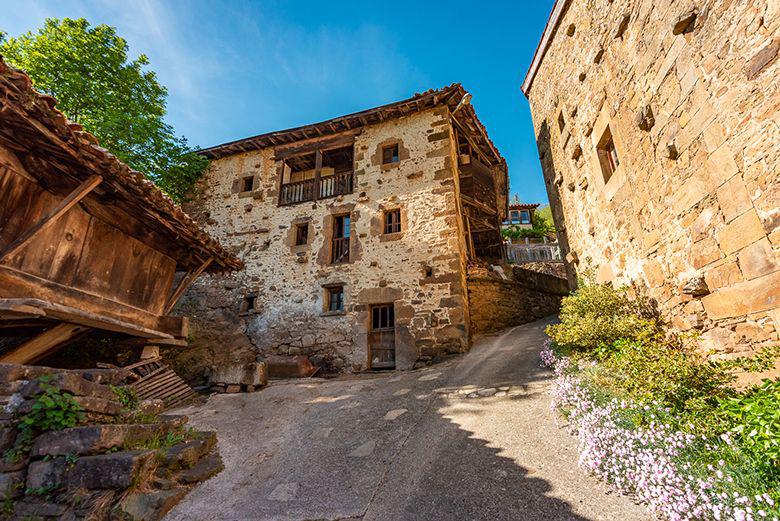
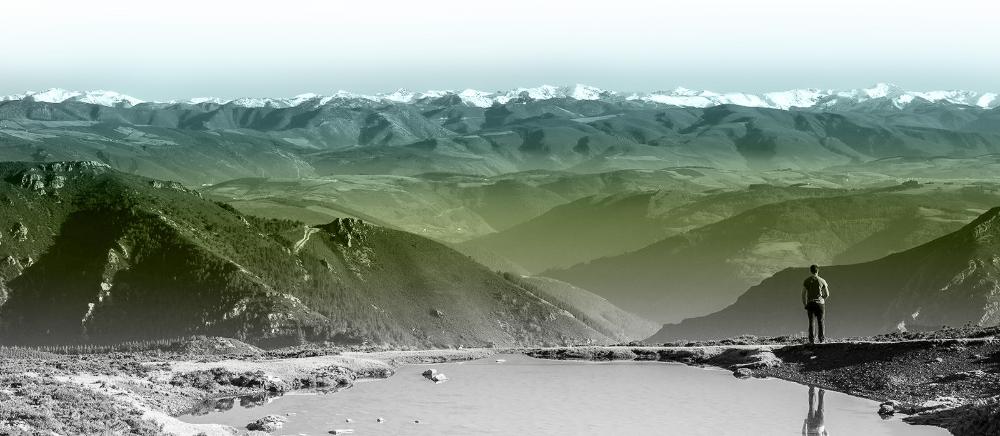
Subscribe to our newsletter and take advantage of offers, discounts, and news
Subscribe

